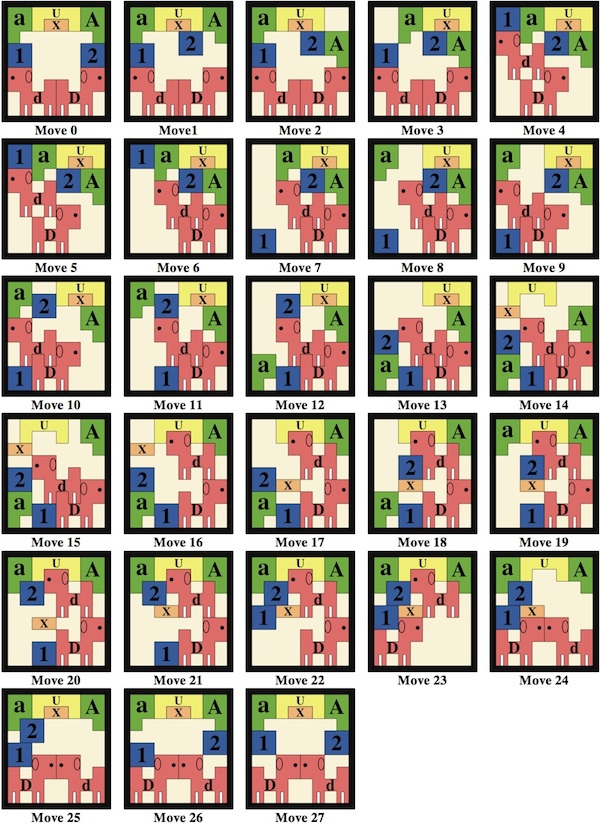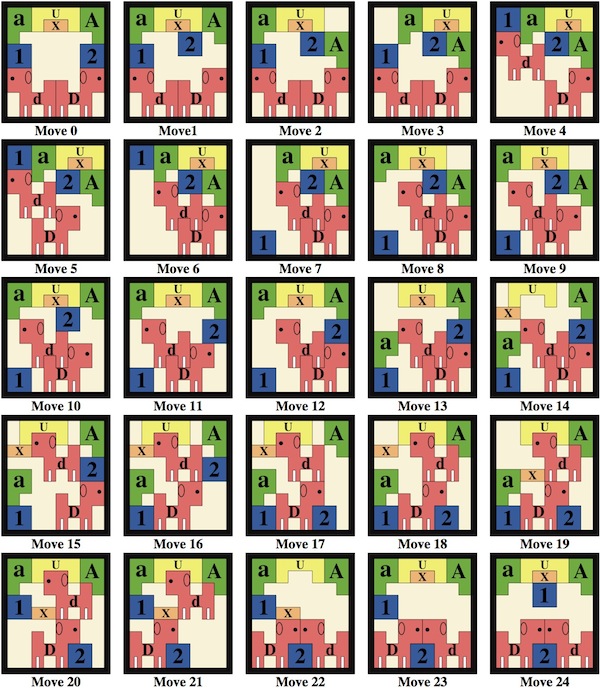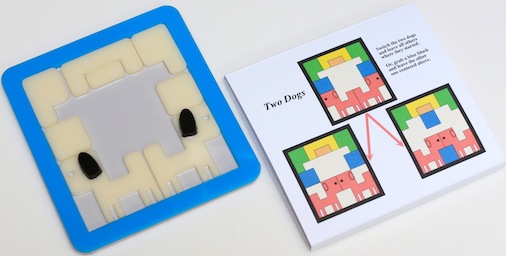
Designed and made by D. Namdarian 2013; sleeve added by J. Storer.
(made from 1/8" thick laser cut plastic, board 2 layers, pieces 2 layers, 4.375" x 4" x 3/8";
the eight pieces are two layers only due to the dog ears)
The start position has the two dogs facing away from each other and the other 6 pieces neatly arranged above them. A natural problem is to exchange the two dogs while leaving the rest of the puzzle the same. A second problem, shown in the puzzle directions and sample solution, is where one of the square pieces ends up above the dogs and one between them.
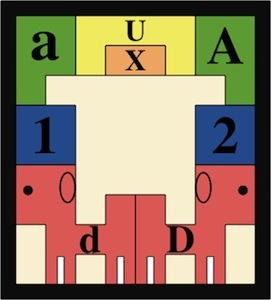
StartPosition |
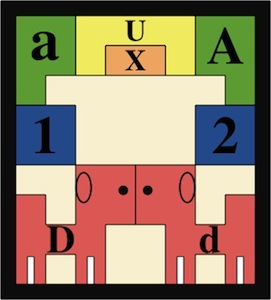
Problem 1 |
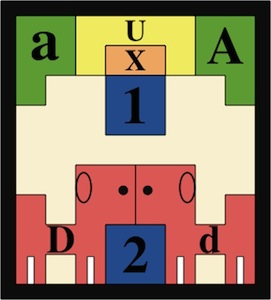
Problem 2 |
The directions allow pieces that are touching to move together; we call this a join move. Also, we say that a join move is an interlocked move if it is not possible to replace it by moving its pieces one at a time. For this puzzle, join moves are not merely a way to count moves; the puzzle cannot be solved without employing some interlocked moves.
The next page show a 27 move solution to Problem 1. In Step 14, X drags U and then lets it go before the end of the move; it this is considered illegal, then Step 14 can be replaced by two steps for a solution of 28 moves. If movement is restricted to only allow join moves that are interlocked, then steps 3, 4, 6, 11, 14, 16 can each be replaced by two moves (one of them possibly interlocked) for a solution of 33 moves.
Following the solution for Problem 1 is a 24 move solution to Problem 2. Like Problem 1, if Step 14 is considered illegal, replace it by two moves for a solution of 25 moves. If movement is restricted to only allow join moves that are interlocked, then steps 3, 4, 6, 8, 14, 20, 21 can each be replaced by two moves (one of them possibly interlocked) for a solution of 31 moves.
